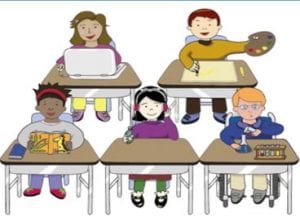Jan
2019
Varied Instruction
 Humans are unique creatures. The advancement of society from the nomadic tribes of yesteryear to today’s technically connected epicenters has depended mainly on human’s ingenuity. How did humans learn to be so creative, resourceful, and knowledgeable? Was it through a well thought out academic framework? Was it trial by fire? Or a combination of numerous influences all as unique as the individuals themselves?
Humans are unique creatures. The advancement of society from the nomadic tribes of yesteryear to today’s technically connected epicenters has depended mainly on human’s ingenuity. How did humans learn to be so creative, resourceful, and knowledgeable? Was it through a well thought out academic framework? Was it trial by fire? Or a combination of numerous influences all as unique as the individuals themselves?
A plentiful cache of learning theories has attempted to answer those questions, and it is safe to say that no sloe theory tells us exactly how humans learn. However, several have been well researched, thoroughly documented, and soundly applied providing confidence in the broad elements.
Varied instruction takes into consideration the theories of multiple intelligence, constructivism, humanistic psychology, and cognitive development through the idea of neurodiversity. Boiled down to its most basic points, neurodiversity creates a complex educational landscape, one in which the educator attempts to navigate through more individualized instruction.
Individual difference variables are the drivers of a classroom of varied instruction. Honing in on those elements which make each learner unique and creating a curriculum which caters to those individual learning differences is a tall order. In an education system which is designed to education enmass, it may seem that the ‘teach to the average’ method which was employed for an industrialized America is now the system with which we are stuck. This is not the case. Although it seems impossible for mass education to accommodate one-on-one individualized education, detailed planning and first-hand knowledge of students makes the impossible into the possible.
In a diverse learning environment where each learner’s strengths and weaknesses are known, measured, supplemented, and assisted; the individual learner has a chance. With the theory of varied instruction in mind, reviewing cognitive processes, how the brain learns, how the developing brain is posited to learn multiple things, in multiple ways, at multiple times, is the key to successful, motivated, autonomous learners. Bottom line, providing ‘voice and choice’ to accomplish the same goal (write an essay, create a mind map, drawn a comic strip) will accomplish the same objectives.
What does varied instruction look like in your classroom?